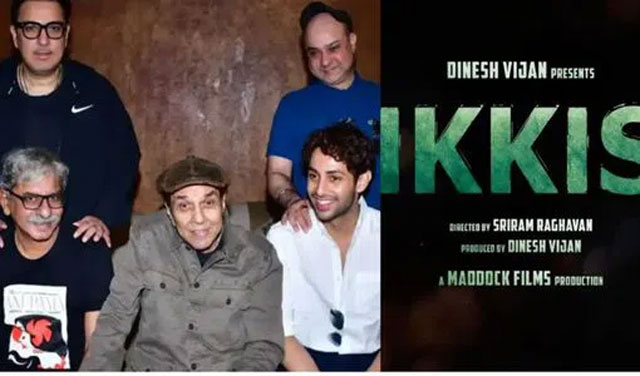Daijiworld Media Network- Mumbai
Mumbai, May 25: Celebrated filmmaker Sriram Raghavan, known for his masterstrokes in thrillers like Ek Hasina Thi, Johnny Gaddaar, and Andhadhun, is all set to step into uncharted territory with his upcoming war drama Ikkis. However, the film, even before its release, has stirred a factual controversy that has caught the attention of defence historians and cinema enthusiasts alike.
Slated for a grand Gandhi Jayanti release on October 2, 2025, Ikkis is a biographical war film based on the valiant tale of Second Lieutenant Arun Khetarpal, a hero of the 1971 Indo-Pak war. The film stars Agastya Nanda, Jaideep Ahlawat, and veteran actor Dharmendra, and is produced by Maddock Films.

The controversy arises from the film's promotional content that describes Arun Khetarpal as “the youngest recipient of the Param Vir Chakra”, a claim that is historically inaccurate. In reality, Grenadier Yogendra Singh Yadav, who fought in the Kargil War of 1999, holds the distinction of being the youngest recipient of India's highest wartime gallantry award — receiving the honour at the age of 19. Arun Khetarpal, in contrast, was 21 years old when he was posthumously awarded the Param Vir Chakra for his unmatched bravery during the Battle of Basantar.
Set against the backdrop of this fierce battle fought in Shakargarh near the Basantar River, the film delves into one of the most crucial turning points of the 1971 war. The battle saw Khetarpal, a young armoured corps officer, displaying extraordinary courage by taking on the superior firepower of Pakistan's Patton tanks with British-made Centurions. Despite heavy odds and imminent danger, he destroyed 10 enemy tanks before laying down his life for the nation.
The connection between water and warfare becomes poetically symbolic in Ikkis. While Operation Sindoor, India’s recent counter-terror offensive, was triggered by the suspension of the Indus Water Treaty, the Battle of Basantar was fought over the river that feeds into the Ravi, with Indian forces aiming to secure the bridgehead and neutralize Pakistani strongholds.
The narrative further explores how the Indian Army’s relentless advance nearly reached Sialkot, with Pakistani forces forced to seek air support. However, with the Indian Air Force dominating the skies, the Pakistani offensive crumbled, leading to an eventual unconditional surrender — a key moment that led to the birth of Bangladesh and the capture of 93,000 Pakistani soldiers.
While the film is eagerly awaited for its gripping subject and cinematic scale, military historians and defence experts are urging the filmmakers to rectify the historical misrepresentation regarding the Param Vir Chakra distinction.
As anticipation builds, Ikkis promises to bring alive a golden chapter of India’s military history on the silver screen, albeit with a need for careful fact-checking to preserve its integrity.